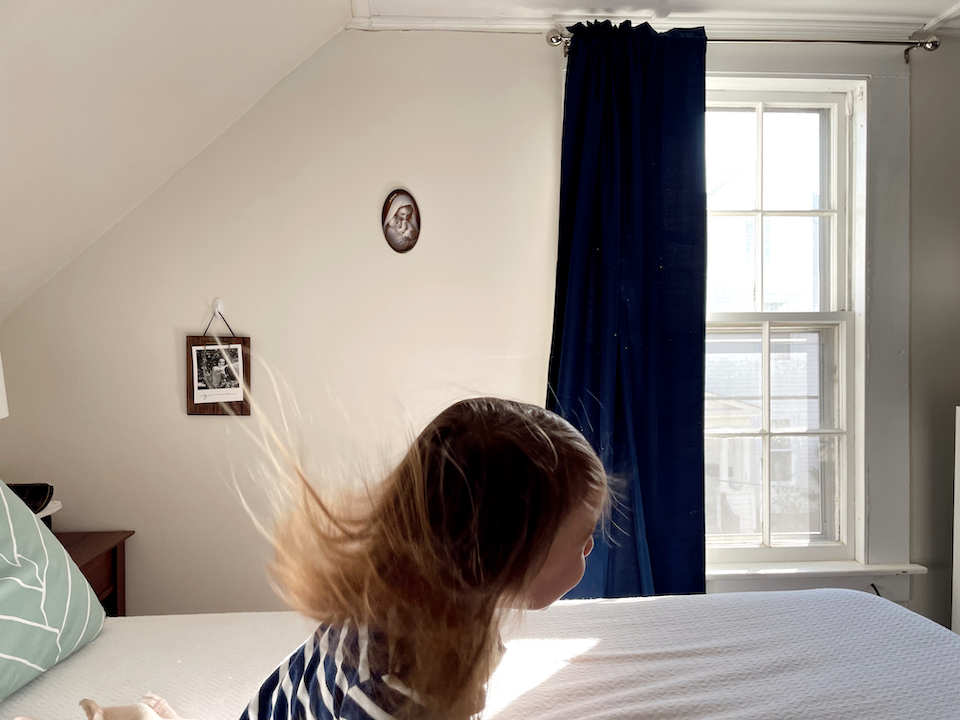It’s Easter Sunday, right during the pre-dinner bustle in the kitchen, and I’m following my son as he toddles about the kitchen, looking for mischief. Walking up to the wall, he begins to repeatedly slap his hands on the smooth vertical surface. Because toddlers do all sorts of funny things, with often no apparent rhyme or reason, I take no notice, until I realize that he’s trying to grab something on the wall, though there is nothing there. Looking closer, it’s clear that he is grasping at the dancing beams of light streaming across the kitchen through the sliding door. Mesmerized by the interplay of sun and shadow, his little hands try to catch that which he can see but cannot hold. Immediately, I feel a connection to my son’s futile motions. Because most days, I too seek the light but cannot always capture it. I too see the interplay of light and shadow within my life and cannot always understand their wild dance.
When I was a junior in college, studying abroad in Rome, I learned about the term “chiaroscuro” while visiting one of the famous Caravaggio paintings hidden amongst Rome’s many churches. The term indicates the artistic technique of contrasting light and darkness within paintings, creating a tension that often illuminates a deeper meaning that the artist wants to communicate. Through this effect, the onlookers’ eyes are drawn toward the areas of the painting bathed in light. The contrast of the dark shadows against the light makes the lighter areas look brighter compared to the darkness around them. Without the opposing shadows, the brightness of the light would lose its full brilliancy.
If I were to tell the story of my life to a stranger, my timeline would probably consist of the highlights, the moments of accomplishment, joy, and triumph. But in reality, the moments of darkness and doubt, fear and discouragement are inseparable from the high “lights” because the darkness is often where we realize how much we need the light, spurring us to seek it more zealously than ever. The idea of chiaroscuro, the drama of light and darkness together, reminds me that to be human is to live with both joy and suffering at the same time.
But how do we bear this reality of light and darkness within the everyday?
As someone who tends to be melancholic in temperament, I can often become lost in the shadows, which always make the light seem more distant and unattainable. Living in the light, that is to say, always keeping the reality of eternity in mind, is no easy task, and as mothers (biological and spiritual), women are especially close to this intermingling of light and dark within the human person. We suffer intensely to bring our babies into the world. We hold them through every fall and rise with them in every triumph. To mother a child is to embrace life’s greatest joys alongside the most difficult crosses.
To live with both darkness and light, like an artist using the method of chiaroscuro, we must never let the darkness become the focal point, but rather use it to reinforce the light. This requires deep-rooted faith and remembrance of the Resurrection, which is the cause of our hope in eternity, along with a spirit of strength that prevents us from being overcome by the darkness of despair. Fostering these attitudes requires the patient skill of an attentive artist, who is always looking for pockets of beauty to capture with their brush. Just like my son, toddling about the kitchen on Easter Sunday, we must energetically seek the light, despite all odds, holding it within us and patiently weaving it into every area of our life.
In a conversation with a friend this past lent, we were discussing the meaning of suffering, and how the older we have grown, the more we realize how difficult it is to suffer well and find Christ in our crosses. Amidst this conversation, my friend commented on the beauty of Laudate Sunday, the fourth Sunday of Lent, wherein the Church bids us to rejoice in the very middle of a season full of penance and fasting, reminding us that there is always a reason to rejoice, even amidst suffering. Within the busy, sometimes lulling routine of the everyday, we must find the pockets of light that are there, waiting to be celebrated and to renew us. Sometimes it’s your child meeting a milestone, like rolling over, first steps, saying a first word. Other moments are unexplainable, like when your daughter looks outside and says, “It’s so sunny, Mom!” even though the sky is full of rain clouds and her positive outlook becomes the sunshine you need right then. These moments are constant, fleeting, but unmistakably signs of light whether we choose to let them warm us or not. Like the daily grandeur of a sunrise or sunset, we can become immune to their sway or let them regularly renew us.
So if you have made it thus far in my rambling attempt to grapple with the chiaroscuro of my own life and wondering what to do with your own, know that I am right there with you, constantly dancing in and out of light and shadow, trying to grasp at sunbeams like my toddler on Easter Sunday and doing my best to keep my eyes ever fixed on the source of all light that is Christ.




